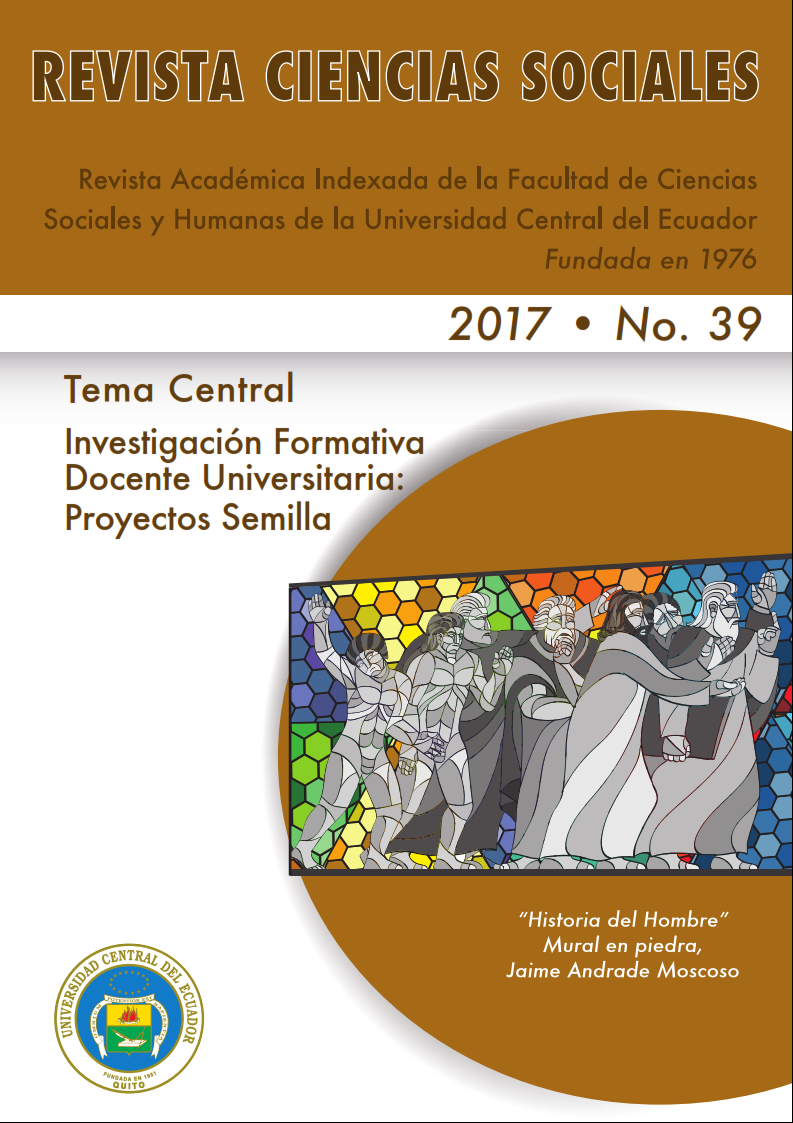Public management: analysis of the development of electronic government in the public administration of Ecuador in the period 2014-2016
Keywords:
Information and Communication Technologies Tics, Electronic Government, National Secretary of Public Administration, CEPALAbstract
States at the global level have been making efforts to improve Public Management at all levels, so that the use of Information and Communication Technologies (TIC) has helped to achieve this aim, allowing for better governance, has incorporated the term Electronic Government (GE). In Ecuador, the National Government through the National Secretary of Public Administration (SNAP) had the competence to implement, regulate, advise and support the implementation of GE, currently has the Ministry of Telecommunications and the MINTEL Information Society. The National Electronic Government Plan was generated for the period 2014 - 2017, establishing a legal and regulatory framework that allows compliance with international agreements. The regulatory framework has been institutionalized GE is now a state policy. The research seeks to carry out an evolutionary analysis of the development of GE in public administration in 33 public entities, using the Multi-Dimensional Model of Electronic Government Measurement for Latin America and the Caribbean proposed by CEPAL.
Downloads
References
CEPAL. (2007). Hacia un modelo multi-dimensional de gobierno electrónico. Santiago de Chile: Naciones Unidas.
Chevallerau, F. X. (2005). eGovernment in the Member Satates of the European Union. Bruselas: IDABC.
CLAD. (2007). Cartas Iberoamericanas de Gobierno Electronico. Santiago de Chile: ONU.
Concha, Gastón; Naser, Alejandra. (2012). El desafío hacia el gobierno abierto en la hora de la igualdad. Santiago de Chile: Naciones Unidas.
Asamblea Constituyente. (2008). Constitución Política de la República del Ecuador. Quito: Registro Ofiacial del Ecuador.
DeMaio, C. D., & Frost, M. (2003). Creating a Performance-Based Electronics Government. Arlington: The Performance Institute.
Dunleavy, P., Margetts, H., & Bastow, S. (2006). Digital Era Governance: IT Corporations, the State and E- Government. Oxford: University Press.
Eurostat. (2005). Measuring E-government. Paris.
Gasco, M. (2005). Exploring the E-government Gap in South America. International Journal of Public Administration, 683-701.
Gil Garcia, J. R. (2012). Enacting Electronic Government Success: An Integrative Study of Government-wide Websites, Organizational Capabilities and Institutions. Nueva York: Springer.
Gil García, J., & Criado,J. (2013). Gobierno electrónico, gestión y políticas públicas, estado actual y tendencias futuras en América Latina. Gestión y Politica Pública, 3-48.
------- (2013). Gestion y Política Pública. Mexico: CIDE.
Layne, K., & Lee, J. (2001). Developing fully functional e-government: A four stage model. Government Information Quartely, 122-136.
Luna Reyes, L. F. (2013). Trust and Collaboration in Interorganizational Information Technology Projects in the Public Sector. Gestión y Política Pública, 307-340.
Ministerio Secretaria General de la Presidencia de Chile. (2006). Gobierno electrónico en Chile año 2000-2005. Santiago de Chile: MAVAL LTda.
OCDE. (2005). Gobierno electrónico y su evolución. Madrid: OCDE.
Purón Cid, G. (2013). The Dimensions of Knowledge in E-government adoption. A confirmatory factory Analysis. Gestión y Política Pública.
Sánchez Figueroa, J. (2009). La administración pública en la sociedad de la información: antecedentes de la adopción de las iniciativas de Gobierno Electrónico por los ciudadanos. Madrid: EPN.
Siau, K., & Long, Y. (2005). Synthesizing e-government stage models - a meta-synthesis based on meta.ethnography approach. Industrial Management & Data Systems, 443 - 458.
Stowers, G. N. (2004). Measuring the Performance of E-government. Washington D.C.: The Center for the Business of Government.
Swartz, N. (2004). E-Government Around the World. Information Management Journal, 269-281.
Warketing, M., & Pavlov, P. (2002). Encouraging Citizen Adoption of e-Government by Building Trist. Electronic Markets, 157-
Downloads
Published
How to Cite
Issue
Section
License
Política de acceso abierto
La revista Ciencias Sociales adhiere al modelo Acceso Abierto en el que los contenidos de las publicaciones científicas se encuentran disponibles a texto completo libre y gratuito en Internet, sin embargos temporales, y cuyos costos de producción editorial no son transferidos a los/las autores/as.
En ese sentido, no existe costo alguno para los/as autores/as en el envío o durante el proceso editorial, defendiendo el derecho a la información con equidad e iguales oportunidades de acceso.
Licencia y derechos de autor/a
Los autores conservan todos los derechos de publicación del artículo y conceden a la Revista Ciencias Sociales una licencia no exclusiva, intrasferible y sin regalías por duración ilimitada para su reproducción, distribución y comunicación pública a nivel mundial bajo una Licencia Creative Commons Atribución 4.0 Internacional (CC BY NC 4.0)


